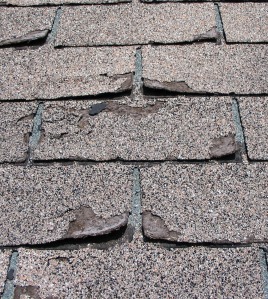Today’s home owners and buyers are looking for ways to incorporate home technologies that increase the long-term value of their house but also provide convenience, safety and comfort. Energy management is a highly-desired feature in both newly-built and existing homes, along with multi-zone heating, ventilation and air-conditioning (HVAC) systems and lighting controls. Not only are these features easy-to-use, but they also provide energy-efficiency.
By incorporating the following technologies, home owners can save money on their utility bills:
- Automated HVAC systems can maintain a more energy-efficient temperature while the home owners are away at work, but switch to a more comfortable temperature prior to their arrival home. Zones can also be created to heat or cool only the areas most used by the occupants, keeping other areas, such as guest bedrooms, shut down until they are needed. They also can combat the problem of heat rising, keeping upper floors cooler in the summer without freezing the lower floors in a home. According to Energy Star, a joint program of the U.S. Environmental Protection Agency and the U.S. Department of Energy, programmable thermostats can save consumers about $180 per year in energy costs.

- Water heaters with a timer can be turned off when the occupants are traveling, then can turn on and begin heating the water in preparation for their return home. Tankless gas water heaters — which only activate when residents start to use hot water and immediately de-activate when they are done — are also a great option and can reduce water heating costs up to 35 percent annually.
- Lighting can make up 10 to 20 percent of the total electrical usage of the home. Installing an automatic dimmer, which adjusts to the home owner’s needs based on time of day or occupancy, will lower electricity bills and increase the life expectancy of light bulbs.
- Blinds and drapes can be programmed to close during the hottest part of the day to block out the sun; keeping the house cooler. In the colder winter months, they can open up to allow the sun in to warm the house, which helps regulate the room temperature.
By incorporating technologies that help make your home operate more efficiently, Energy Star estimates that home owners can save $200 to $400 annually on their energy bills.
This article is courtesy of the National Association of Home Builders.


 Keep your attic space at the same temperature as the outside air. As heat rises from your home into the attic, it will cause the snow and ice on your roof to melt quickly, which when it refreezes causes the ice dam. Using proper insulation will keep the heat in your home, but more importantly it will keep it from escaping into your roof shingles through your attic. If there are air leaks, warm air will pass through traditional insulation. The leaks need to be sealed for the insulation to do its job. To do a proper job in sealing air leaks, all insulation should first be removed.
Keep your attic space at the same temperature as the outside air. As heat rises from your home into the attic, it will cause the snow and ice on your roof to melt quickly, which when it refreezes causes the ice dam. Using proper insulation will keep the heat in your home, but more importantly it will keep it from escaping into your roof shingles through your attic. If there are air leaks, warm air will pass through traditional insulation. The leaks need to be sealed for the insulation to do its job. To do a proper job in sealing air leaks, all insulation should first be removed. water spots inside your home this could just be tip of the iceberg – you may have inches of damp insulation in your attic.
water spots inside your home this could just be tip of the iceberg – you may have inches of damp insulation in your attic.
 Extend the life of your fuel supply by winterizing your home. Insulate walls and attics, caulk and weather-strip doors and windows, and install storm windows. An economical alternative to storm windows is to cover them with plastic on the inside.
Extend the life of your fuel supply by winterizing your home. Insulate walls and attics, caulk and weather-strip doors and windows, and install storm windows. An economical alternative to storm windows is to cover them with plastic on the inside. Clear rain gutters so that they don’t fill with water, then freeze and tear away from your roof due to the added weight. Repair roof leaks and cut away tree branches that could fall on your home during a storm.
Clear rain gutters so that they don’t fill with water, then freeze and tear away from your roof due to the added weight. Repair roof leaks and cut away tree branches that could fall on your home during a storm. Have your heating equipment and chimney cleaned and inspected every year.
Have your heating equipment and chimney cleaned and inspected every year. Call a HVAC professional to inspect your furnace and clean the ducts.
Call a HVAC professional to inspect your furnace and clean the ducts.
 Buy smoke detector batteries and change them when daylight savings ends.
Buy smoke detector batteries and change them when daylight savings ends. up to him and asked him what he used — he pointed to his bucket and said, “Dish Soap”. I thought he was joking since I thought I’d heard every way to clean a window, but I had never heard of anyone using dish soap. But here he was, and there was no argument that he knew of what he spoke as the window sparkled. No newspaper, no vinegar, no ammonia—just dish soap. Then he explained his window cleaning process to me.
up to him and asked him what he used — he pointed to his bucket and said, “Dish Soap”. I thought he was joking since I thought I’d heard every way to clean a window, but I had never heard of anyone using dish soap. But here he was, and there was no argument that he knew of what he spoke as the window sparkled. No newspaper, no vinegar, no ammonia—just dish soap. Then he explained his window cleaning process to me. Showers
Showers Bathtubs
Bathtubs Sinks
Sinks
 Tile
Tile
 Another sign of deteriorating shingles becomes apparent when cleaning out your gutters. If you find large amounts of asphalt particles and debris in your gutters or around the perimeter of your roof, it may be starting to fail.
Another sign of deteriorating shingles becomes apparent when cleaning out your gutters. If you find large amounts of asphalt particles and debris in your gutters or around the perimeter of your roof, it may be starting to fail.



 The most obvious sign of roof failure is continuous and growing leaks. Less obvious, but just as incriminating, are changes in the texture or color of your shingles. If you have asphalt shingles, a sure sign of failure, are edges that are curling and becoming brittle. New shingles are pliable and bend to a degree. If you fold the edge of a shingle and it snaps off in your hand, the shingle is most likely starting to fail. Likewise, if your roof is faded or appears faded, this may warrant further investigation. Depending on the climate in which you live, your roof will experience varying stresses that affect its longevity.
The most obvious sign of roof failure is continuous and growing leaks. Less obvious, but just as incriminating, are changes in the texture or color of your shingles. If you have asphalt shingles, a sure sign of failure, are edges that are curling and becoming brittle. New shingles are pliable and bend to a degree. If you fold the edge of a shingle and it snaps off in your hand, the shingle is most likely starting to fail. Likewise, if your roof is faded or appears faded, this may warrant further investigation. Depending on the climate in which you live, your roof will experience varying stresses that affect its longevity. Most shingled roofs have a life expectancy of 15-25 years, depending on climate, shingle color, weight of the shingle, pitch of the roof and even how well your attic is ventilated. Most roofing companies will provide you with a free roof evaluation, along with an estimate for replacement.
Most shingled roofs have a life expectancy of 15-25 years, depending on climate, shingle color, weight of the shingle, pitch of the roof and even how well your attic is ventilated. Most roofing companies will provide you with a free roof evaluation, along with an estimate for replacement.
